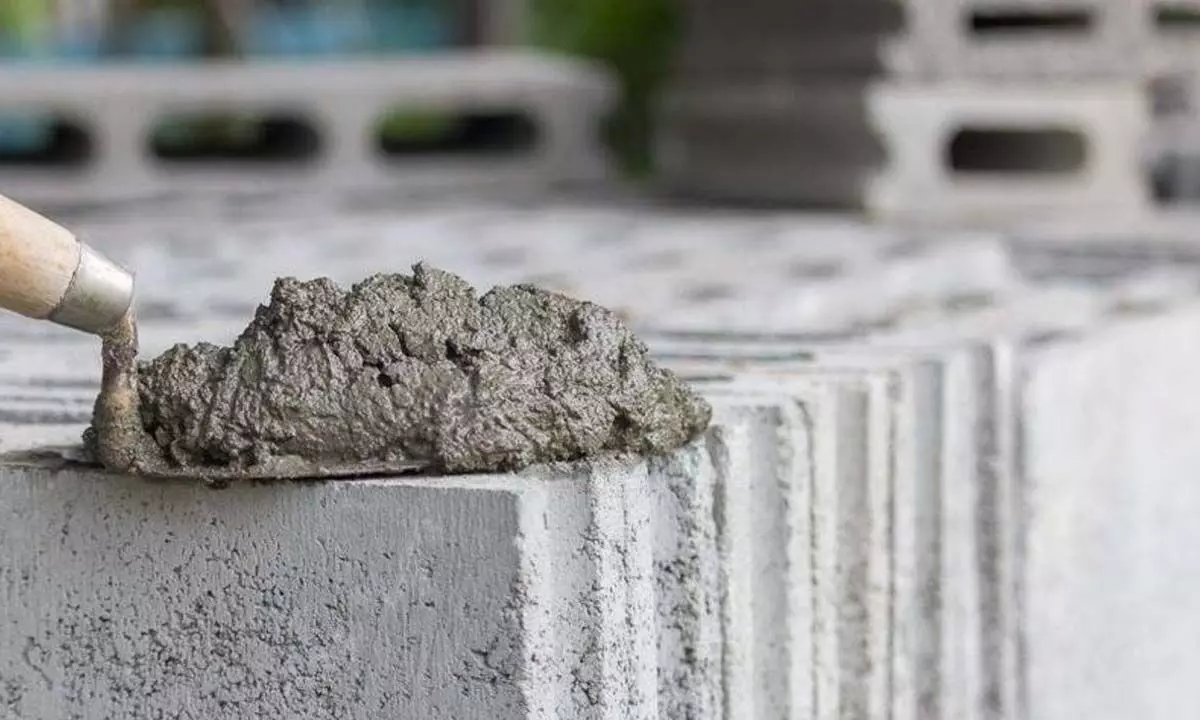High input cost to dampen profitability of cement cos
As per the Union Budget 2022-23, there was a higher allocation for infrastructure to the tune of $26.74 billion in roads and $18.84 billion in railways is likely to boost demand for cement.
image for illustrative purpose

As per the Union Budget 2022-23, there was a higher allocation for infrastructure to the tune of $26.74 billion in roads and $18.84 billion in railways is likely to boost demand for cement. The Centre also approved an outlay of Rs199,107 crore ($26.74 billion) for the Ministry of Road Transport and Highways, and this step is likely to boost the demand for cement. Then several government schemes such as MGNREGA, PM Garib Kalyan Rozgar Abhiyan and state-level schemes such as Matir Srisht (West Bengal) and public work schemes (Jharkhand) have aided cement demand. And not to forget that in October 2021, Prime Minister, Narendra Modi, launched the 'PM Gati Shakti - National Master Plan (NMP)' for multimodal connectivity. Gati Shakti will bring synergy to create a world-class, seamless multimodal transport network in India. This will boost the demand for cement in the future.
All these facts and figures clearly indicate that cement volume growth this fiscal will be driven by non-housing segments, wherein offtake is expected to rise more than 15 per cent. Demand from the infrastructure segment will be aided by government spend, while industrial/ commercial demand will be driven by growing investment in data centres and warehousing, and the low base of the previous fiscal.
Going by a recent Crisil study, offtake from housing segment is expected to grow nearly 5 per cent, taking overall cement volume growth to 8-10 per cent. Mind you that under the housing for all segment, 8 million households will be identified and accordingly Rs 48,000 crore ($6.44 billion) has been set aside for PM Awas Yojana.
Along with these, one must also remember that cement production cost may rise 8-9 per cent this fiscal, given that the benefit of softening petcoke and coal prices will be visible only towards the end of the fiscal as the high-cost inventory depletes. Cement prices, on the other hand, may go up by just 3-4 per cent, bringing down the operating profitability of cement makers (Ebitda per tonne) by Rs 150-175 to Rs 900-925 this fiscal. This will still be a tad higher than the decadal average. At least that's what the Crisil study suggests.
The 17 per cent growth in cement demand during the first quarter of this fiscal, albeit on the low base of the previous fiscal (which was hit by the second wave of Covid-19), actually offers a silver lining. The higher demand is expected to mitigate the impact of lower profitability on absolute operating profits and cash accruals of cement makers, cushioning their credit profiles.
When it comes to production, India's cement production capacity is expected to reach 550 MT by 2025. The cement demand in India is estimated to touch 419.92 MT by FY27 driven by the expanding demand of different sectors, i.e., housing, commercial construction, and industrial construction. In fact, in the next 10 years, India could become the main exporter of clinker and gray cement to the Middle East, Africa, and other developing nations of the world. At present, the installed capacity of cement in India is 500 MTPA with production of 298 MTPA. On a global scale, India is the second largest cement producer in the world and accounted for over 7 per cent of the global installed capacity. Of the total capacity, 98 per cent lies with the private sector and the rest with public sector. The top 20 companies account for around 70 per cent of the total cement production in India. The other good thing is that India has a high quantity and quality of limestone deposits through-out the country and riding on that, the cement industry certainly promises huge potential for growth.

